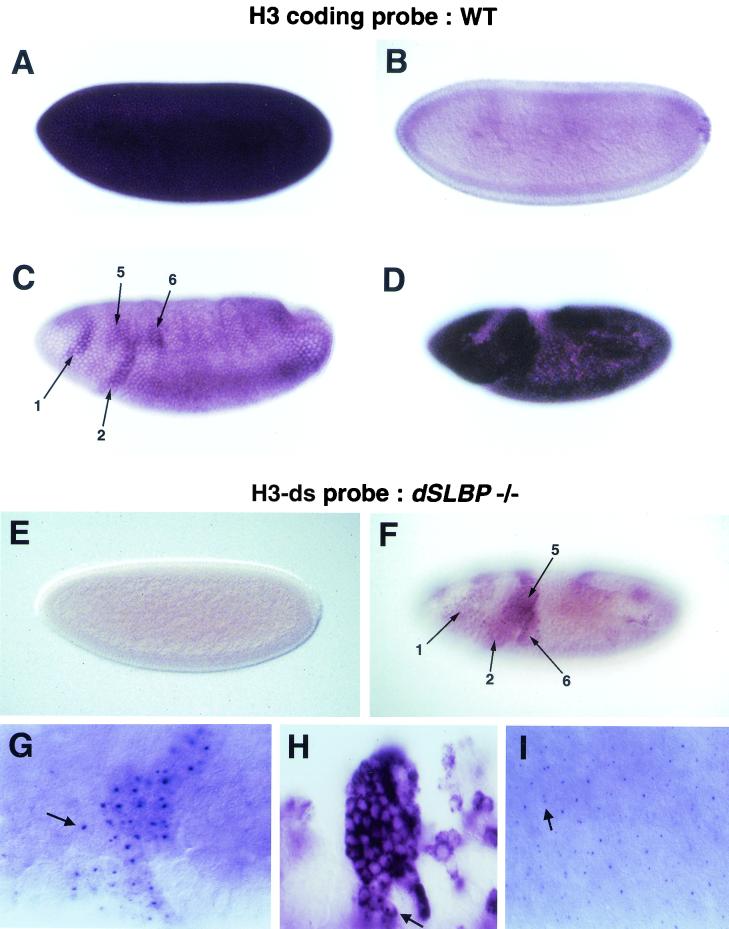FIG. 9.
Zygotic histone transcription occurs in the mitotic domain pattern in the early embryo. (A to D) In situ hybridization of yw67 wild-type embryos using an H3 coding region probe. (A) A high level of maternal histone H3 mRNA is deposited into the egg. (B) Much lower levels are observed in cellular blastoderm embryos. The detectable H3 message may result from a failure to destroy all maternal H3 mRNA and/or from the initiation of zygotic histone transcription during S phase 14. (C) As embryos begin to gastrulate in cycle 14, zygotic H3 mRNA begins to accumulate in the mitotic domain pattern. The arrows indicate mitotic domains 1, 2, 5, and 6. The mitotic domain pattern is somewhat masked by the presence of ubiquitous H3 mRNA. (D) H3 mRNA accumulation becomes widespread in germ band extended embryos, although the mitotic domain pattern is still evident. (E to I) In situ hybridization of embryos collected from dSLBP15/+ parents using the histone H3-ds probe. (E) No misprocessed maternal H3 mRNA is detected in either pre-blastoderm or blastoderm embryos regardless of genotype. (F) During gastrulation de novo synthesis of misprocessed histone H3 mRNA in dSLBP15/dSLBP15 embryos begins to appear in the mitotic domain pattern, with domains 1, 2, 5, and 6 indicated by arrows. This embryo is slightly older than the embryo shown in panel C. (G) Higher magnification of misprocessed histone H3expression reveals nascent transcription dots (arrow) in the nucleus of cells from dSLBP15/dSLBP15 mutant embryos. Mitotic domain 2 is shown. (H) Stage 11 (cycle 17) dSLBP15/dSLBP15 embryo showing that misprocessed H3 mRNA eventually accumulates in the cytoplasm. Nascent transcription dots can also be seen at this stage (arrow). (I) A cellularizing blastoderm embryo where nascent transcription dots are observed during S14. A single transcription dot is visible in some nuclei, while others have two (arrow). One versus two likely depends on the degree of pairing between homologs and/or the orientation of the nucleus with repect to the focal plane (28).

